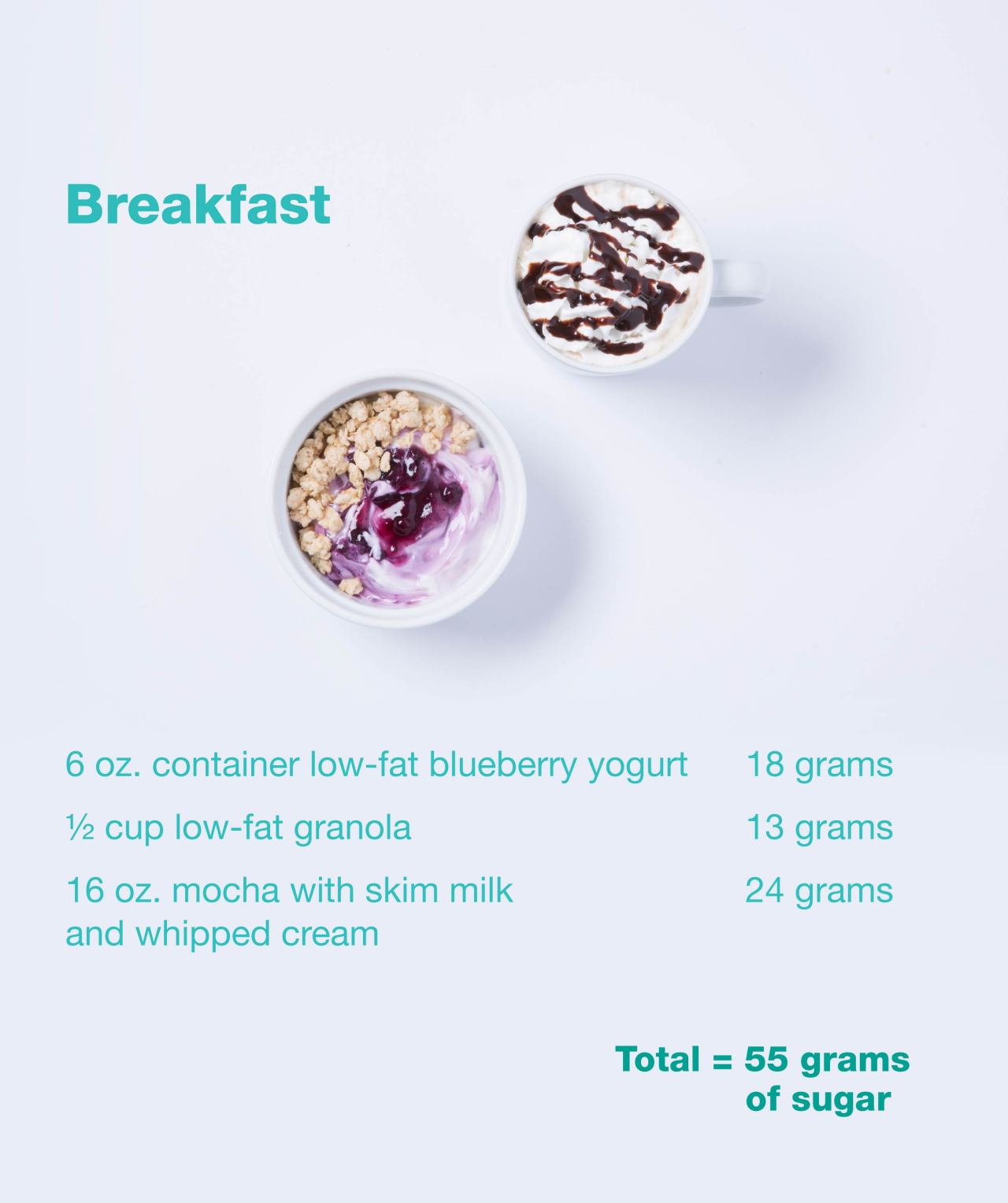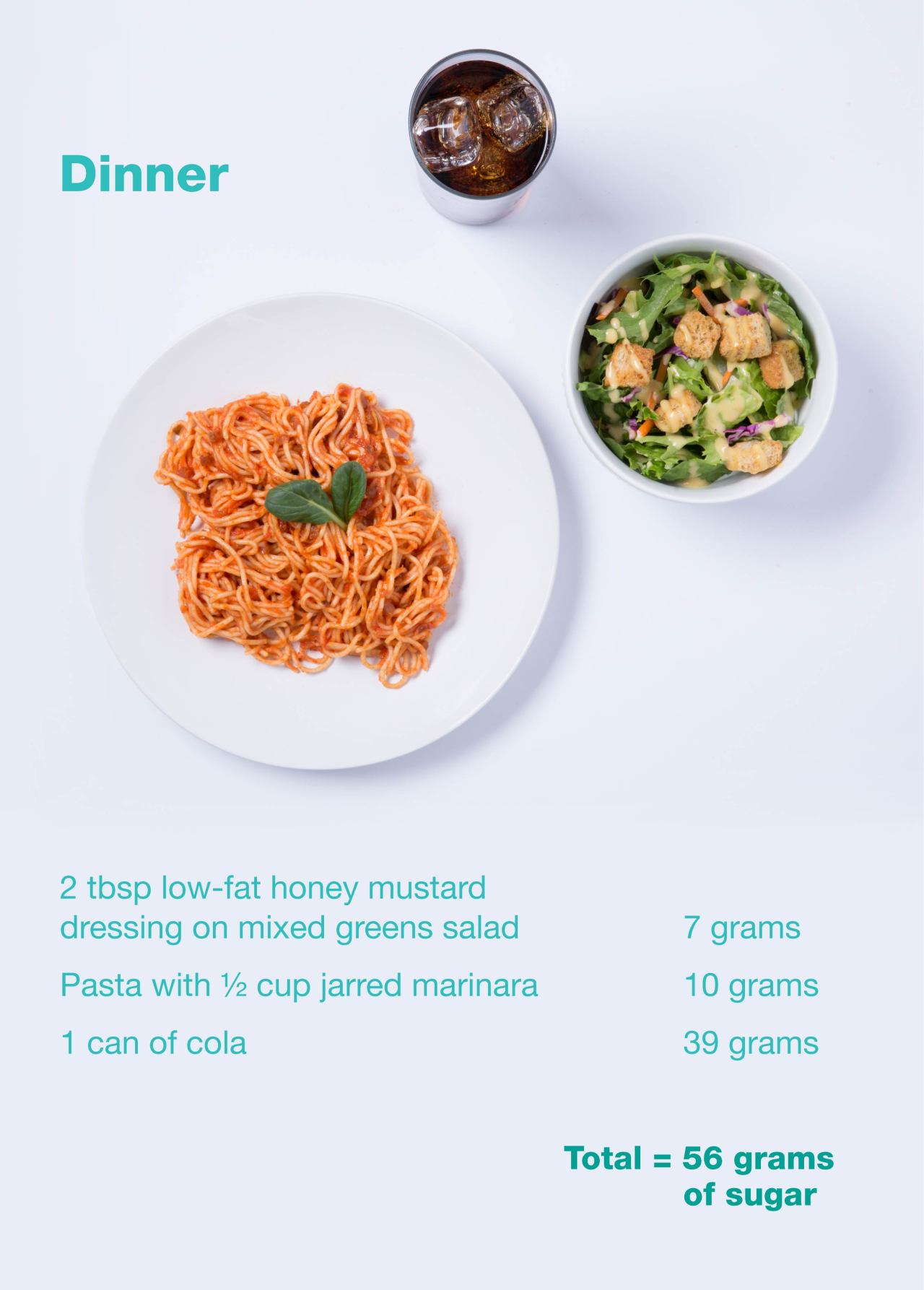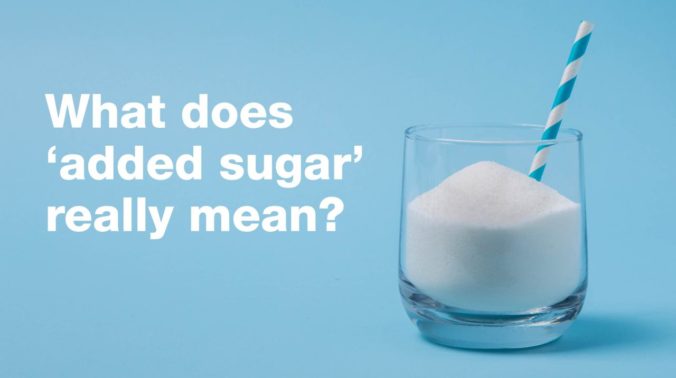Not so sweet after all—added sugars can harm your health. Too much added sugar in your diet can lead to obesity, but it’s also linked to an increased risk for chronic conditions like type 2 diabetes and heart disease.
It’s important to understand the difference between added and naturally occurring sugars. Added sugars are sugars and syrups added to processed foods while they are being made, not the naturally occurring sugars found in foods like fruit or milk. Fruit and milk provide important nutrients like calcium, vitamin A, and vitamin C. Added sugars, on the other hand, provide calories but have little to no vitamins and minerals.
You’re probably consuming more sugar than you realize
Most Americans are eating and drinking too much added sugars. The American Heart Association recommends limiting added sugars to no more than 25 grams (6 teaspoons) per day for most women and no more than 36 grams (9 teaspoons) each day for most men. It may sound like a lot, but added sugars hide in a lot of unexpected places, and they can quickly add up at any meal:



Be a savvy consumer
Many of the sugars consumed today sneak into processed foods that aren’t usually seen as sweets. This includes items like bread, pasta sauce, granola bars, instant oatmeal, barbeque sauce, and salad dressings. To identify how much added sugars are lurking in your foods and drinks, you will likely have to do a bit of detective work. This is because the grams of sugar listed on many nutrition labels do not differentiate between sugars that are added and those that occur naturally. But, thanks to the U.S. Food and Drug Administration’s (FDA) guidance to update the Nutrition Facts label, food manufacturers will be required to list added sugars by 2020.
While some food manufacturers already carry the new label, many have not yet made the switch. Until then, review a product’s ingredients list to find out if sugar has been added. To identify the names of added sugars, look for ingredients including raw sugar, sucrose, fructose maltose, corn syrup, cane sugar, nectars, honey, and molasses. If any of these appear first or second on the ingredient list, the food likely contains high amounts of sugar, and you should consider swapping it out for a healthier choice.
Try these healthy tips to help you cut back on added sugars:
- Skip sugary cereals and prepackaged breakfast items. Instead, fuel your morning with better options such as a veggie omelet, unsweetened cooked oatmeal, or whole-wheat toast with no sugar added natural peanut butter or nut butter.
- Instead of flavored yogurts, sweeten plain varieties by adding fresh fruit or cinnamon.
- Choose breads with little to no added sugar. Be sure to check the ingredient list since even packaged whole-wheat varieties often contain hidden sources of added sugars.
- Swap out soft drinks, lemonade, and sports drinks for water to enjoy a calorie-free beverage. In place of sugary morning coffee drinks, try an unsweetened latte, coffee, or cappuccino. If you drink milk substitutes like almond, soy, or rice milk, choose unsweetened varieties.
- Switch from sweetened to unsweetened applesauce. Unsweetened applesauce can also be used as a substitute for sugar in a recipe.
- Trade store-bought salad dressing, tomato sauce, ketchup, and barbeque sauce for homemade versions so you can control the amount of sugar added to them.
Limiting your intake of added sugars is essential for your health. But you don’t have to completely give up the foods you love. Be aware of how much added sugar you are consuming each day by reading food labels or looking for added sugars in the ingredient list to help you make smarter choices. And if you just can’t kick that craving for a particular food or beverage with lots of added sugar, cut back on the portion size and do your best to only indulge on occasion.
By: Amy Magill, MA, RD, LDN.

Leave a Reply